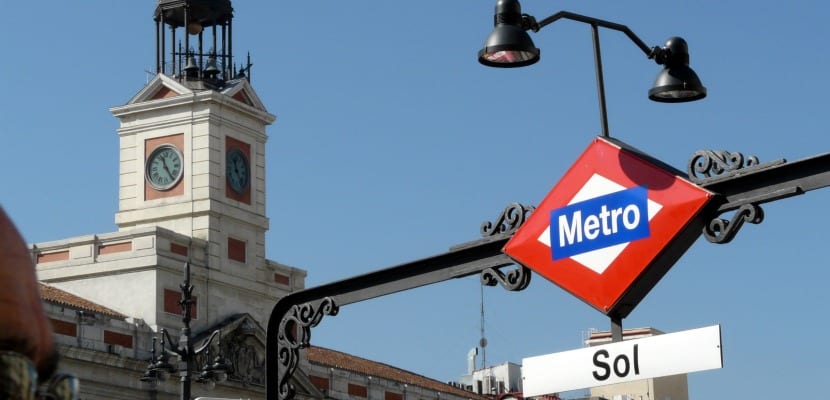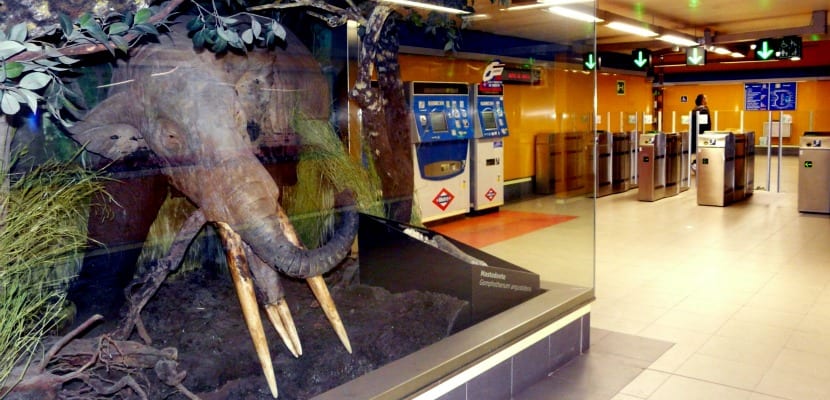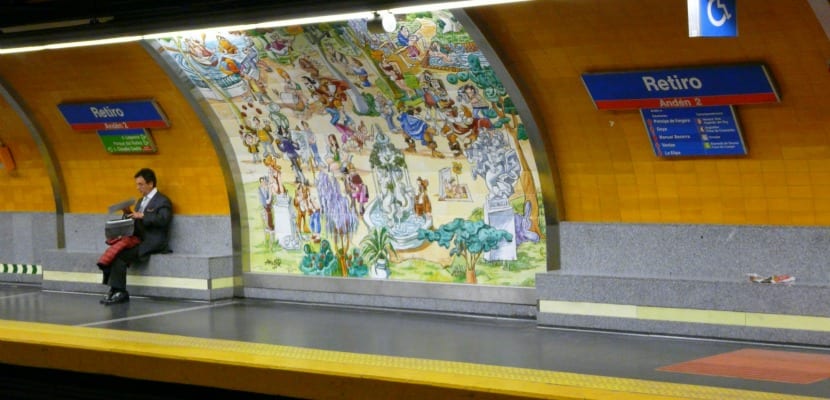
Thousands of people take the Madrid metro every day to get around the capital of Spain. It is the fastest means of transport and one of the best suburban in the world. It was in October 1919 when King Alfonso XIII inaugurated the first section that linked Sol with Cuatro Caminos and since then it has not stopped expanding.
However, the Madrid metro is much more than a means of transport. Although a priori it may not seem like it, it is also an amazing museum as it awaits to be discovered by hurried travelers. In the year of its centenary, below we review the history of the underground, its transport tickets and its different areas.
History of the Madrid metro
In October 1919, King Alfonso XIII inaugurated the first metro station in Madrid: Cuatro Caminos. Days later, the more than 50.000 passengers who made the first trip saw firsthand how the time of their usual tram journey went from half an hour to ten minutes by subway. It was the means of transport of the future and it was immediately a success.
Two years later the first extension to Atocha arrived and in 1924 line 2 between Sol and Ventas was launched. At that time the first roundtrip tickets and the first elevator began to appear, which turned out to be paid.
Not even the Civil War managed to stop its development. A few weeks after the start of the conflict, line 3, between Sol and Embajadores, was opened. However, it was occupied almost immediately and had to be closed like the Goya-Diego de León line (the current line 4). In this period, the wagons alternated the transport of people with that of coffins to the cemeteries in the east of the city and the tunnels were used as shelter during the bombings.
During the Franco regime and with the subsequent demographic growth of the 60s, the platforms on Line 1 were expanded from 60 to 90 meters and in later years the Madrid Metro would experience a great advance. Line 1960 was inaugurated in 5 and in the following decade line 7 between Pueblo Nuevo and Las Musas. Later would arrive the line 6 (circular), the old 8 (which is currently part of the 10 and that made the Nuevos Ministerios-Fuencarral route) and the 9, with which the 100 kilometers were reached when the Plaza Castilla-Herrera section opened Oria in 1983.
In the 90s, the construction of lines 8 and 11 started and the Madrid Metro was preparing to leave the capital for Arganda del Rey and Rivas Vaciamadrid. Currently, the suburban reaches 12 municipalities and more than two and a half million people use this means of transport every day.

Travel by Madrid metro
To travel by Metro de Madrid you need a Public Transport Card loaded with a valid transport ticket for the trip you want to make. The Multi card is used to contain the titles, it is not personal, it is rechargeable and has a duration of ten years.
They can be purchased at the Metro de Madrid and Metro Ligero automatic machines that are distributed throughout all the stations or at the network of tobacconists and other authorized points of sale. Its price is 2,50 euros plus the cost of the transport tickets with which it is recharged.
What titles can you upload?
- Singles valid on Metro, TFM, Metro Ligero 1 and Metro Ligero Oeste.
- 10 Trips valid in Metro, TFM, Metro Ligero 1, Metro Ligero Oeste and urban and interurban buses.
- Airport supplement.
- Tourist Titles.
Fare zones
Metro de Madrid has 8 rate zones, 6 of them for the Community of Madrid and 2 for Castilla-La Mancha. The use of each title must always be within its validity zone. Each area includes the interior areas so that a fertilizer from zone B2 can be used in zones A, B1 and B2; Except for the interzonal passes B1-B2, B2-B3, B3-C1 and C1-C2 which are only valid in the zones to which the title refers.
A
- Metro: Among the stations included in this area
- Buses: All EMT lines and, likewise, the following concessionary company lines: Plaza de Isabel II-Glorieta de los Cármenes (PRISEI) and Madrid-El Pardo-Mingorrubio (ALACUBER).
- Renfe Cercanías: Among the stations included in this area
- Light Metro: Line ML1: Pinar de Chamartín-Las Tablas
B1
This subscription allows you to move through zone A Central, also extending to the following municipalities:
Alcobendas, Alcorcón, Cantoblanco, Coslada, Getafe, Leganés, Paracuellos del Jarama (except Urb. Los Berrocales, Belvis), Pozuelo de Alarcón, Urbanizations of the Rivas-Vaciamadrid, San Fernando de Henares, San Sebastián de los Reyes.

B2
This pass allows you to travel through zones A and B1, also extending to the following municipalities:
Ajalvir, Belvis and Los Berrocales Urb. (Municipality of Paracuellos del Jarama), Boadilla del Monte. Fuenlabrada, Fuente del Fresno Urb. (Municipality of San Sebastián de los Reyes), Las Matas (Municipality of Las Rozas de Madrid), Las Rozas de Madrid, Majadahonda, Mejorada del Campo, Móstoles, Parla, Pinto, Rivas-Vaciamadrid,
Torrejón de Ardoz, Tres Cantos, Velilla de San Antonio, Villaviciosa de Odón.
B3
This pass allows you to move through zones A, B1 and B2, also extending to the following municipalities:
Alcalá de Henares, Algete, Arganda, Arroyomolinos, Brunete, Ciempozuelos, Ciudalcampo (Municipality of San Sebastián de los Reyes), Cobeña, Collado Villalba, Colmenar Viejo, Colmenarejo, Daganzo de Arriba, Galapagar, Griñón, Hoyo de Manzanares, Humanes de Madrid , Loeches, Moraleja de Enmedio, Navalcarnero, San Agustín de Guadalix, San Martín de la Vega, Torrejón de la Calzada, Torrejón de Velasco, Torrelodones, Valdemoro, Villanueva de la Cañada, Villanueva del Pardillo.
C1
This pass allows you to travel through zones A, B1, B2 and B3, also extending to the following municipalities:
El Álamo, Alpedrete, Anchuelo, Aranjuez, Batres, Becerril de la Sierra, El Boalo and entities of Mataelpino and Cerceda, Camarma de Esteruelas, Campo Real, Casarrubuelos, Collado-Mediano, Cubas de la Sagra, Chinchón, El Escorial, Fresno de Torote, Fuente el Saz de Jarama, Guadarrama, Manzanares El Real, Meco, El Molar, Moralzarzal, Morata de Tajuña, Pedrezuela, Perales de Tajuña, Pozuelo del Rey, Quijorna, Ribatejada,
San Lorenzo de El Escorial, Los Santos de la Humosa, Serranillos del Valle, Sevilla la Nueva, Soto del Real, Titulcia
Torres de la Alameda, Valdeavero, Valdemorillo, Valdeolmos-Alalpardo, Valdetorres de Jarama, Valverde de Alcalá, Villaconejos, Villalbilla.
C2
This pass allows you to move through zones A, B1, B2, B3 and C1, also extending to the following municipalities:
La Acebeda, Alameda del Valle, Aldea del Fresno, Ambite, El Atazar, Belmonte de Tajo, El Berrueco, Berzosa de Lozoya, Braojos, Brea de Tajo, Buitrago de Lozoya, Bustarviejo, Cabanillas de la Sierra, La Cabrera, Cadalso de los Glasses, Canencia de la Sierra, Carabaña, Cenicientos, Cercedilla, Cervera de Buitrago, Chapineria, Colmenar de Oreja, Colmenar del Arroyo, Corpa, Estremera, Fresnedillas de la Oliva, Fuentidueña de Tajo, Garganta de los Montes, Gargantilla de Lozoya, Gascones , Guadalíx de la Sierra, La Hiruela, Horcajo de la Sierra, Horcajuelo de la Sierra, Lozoya, among many others.